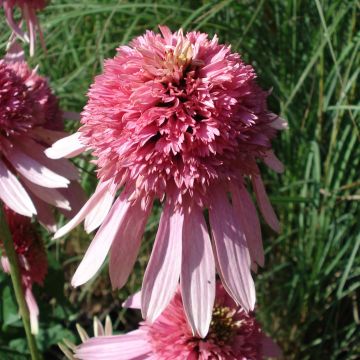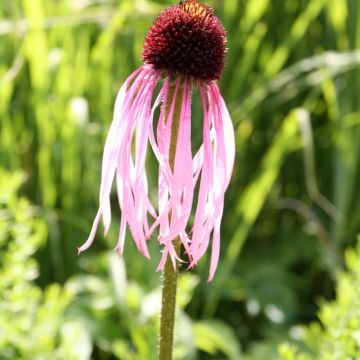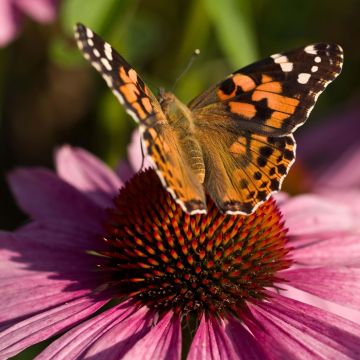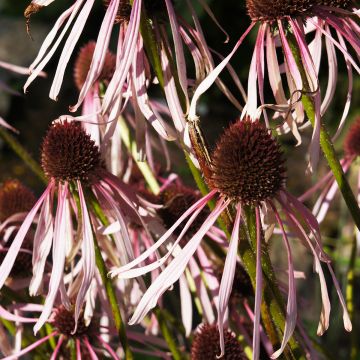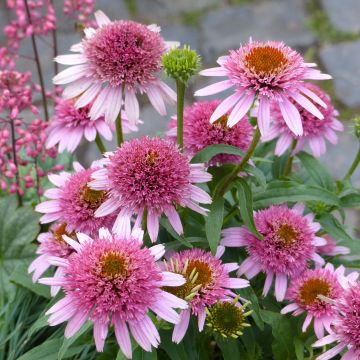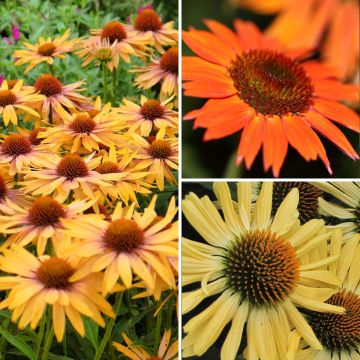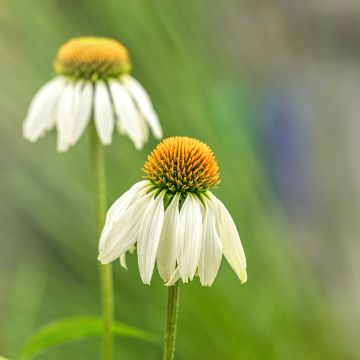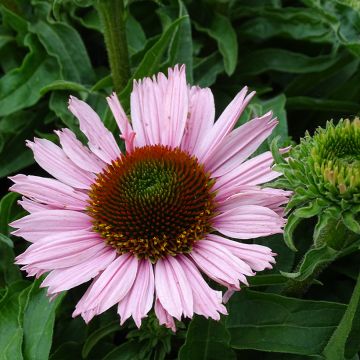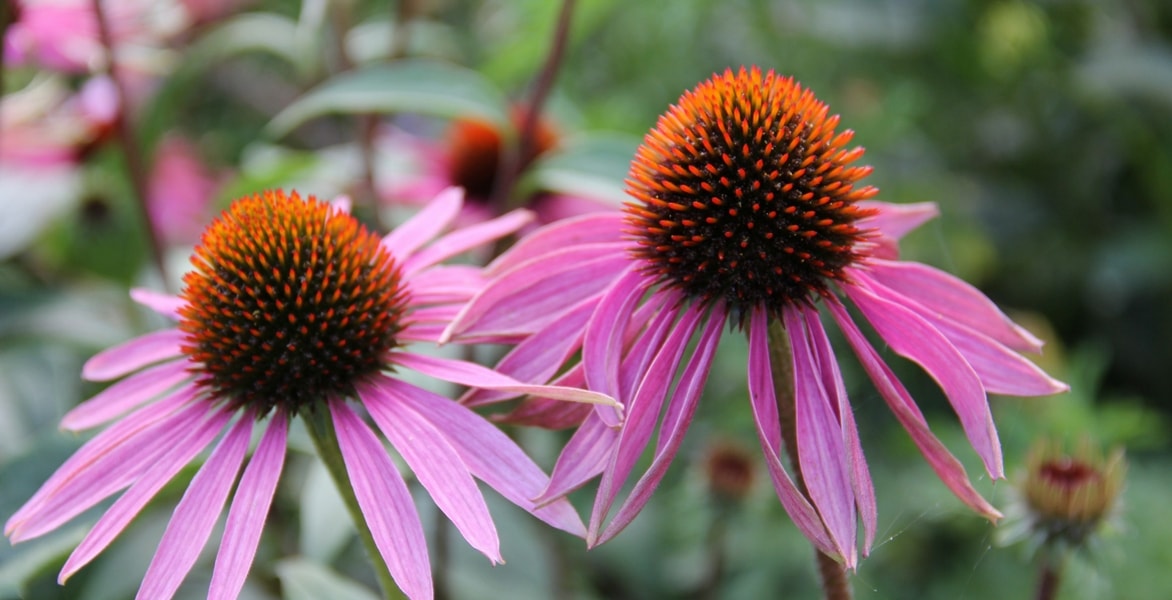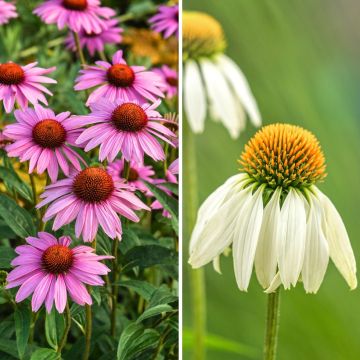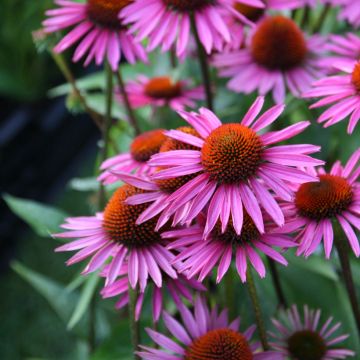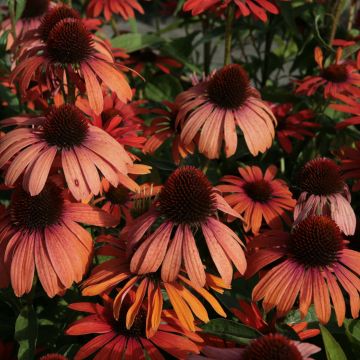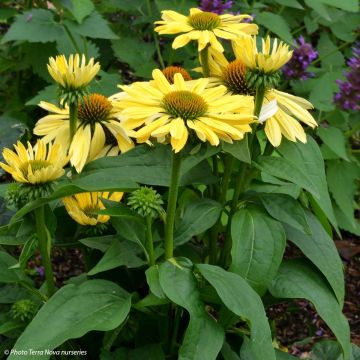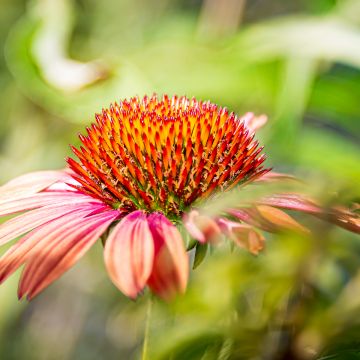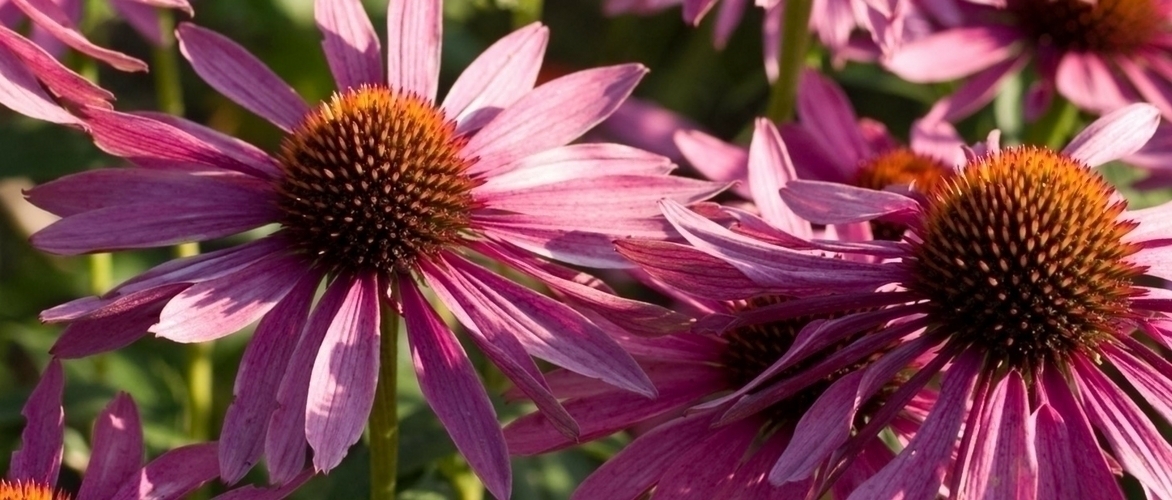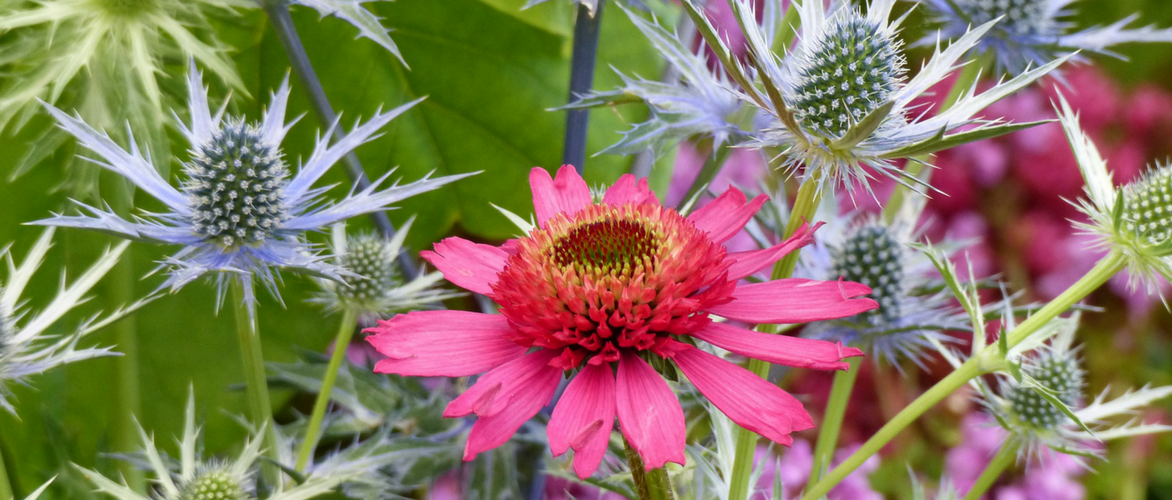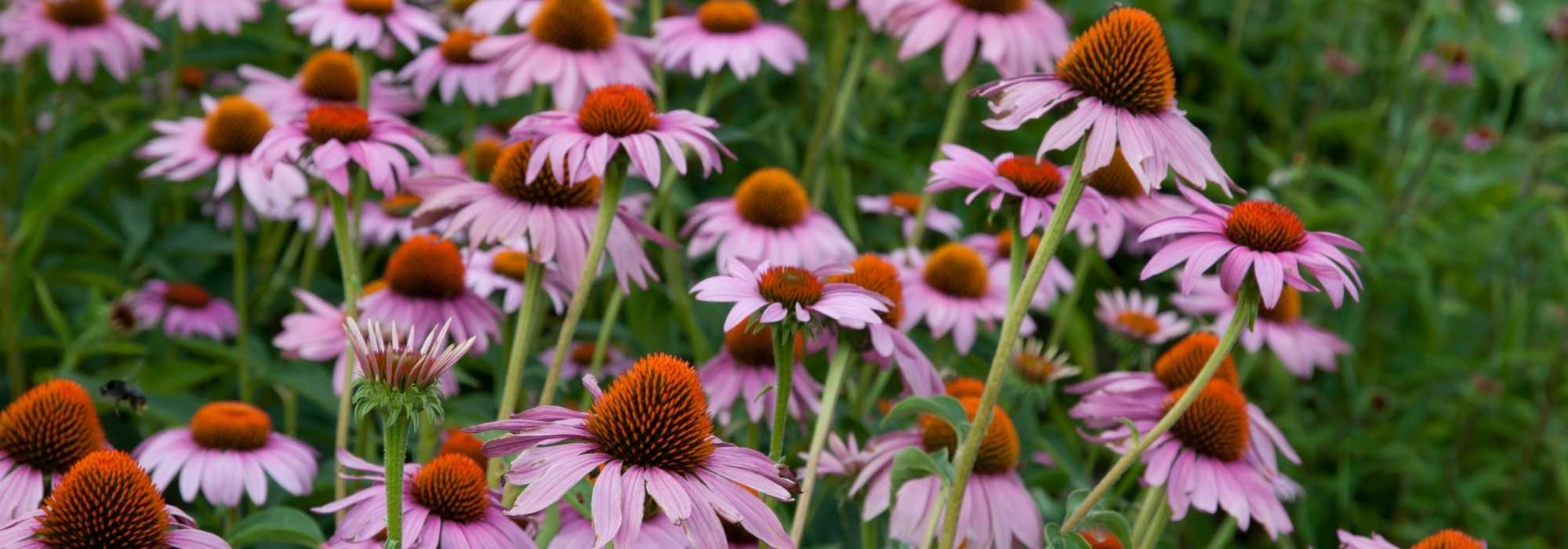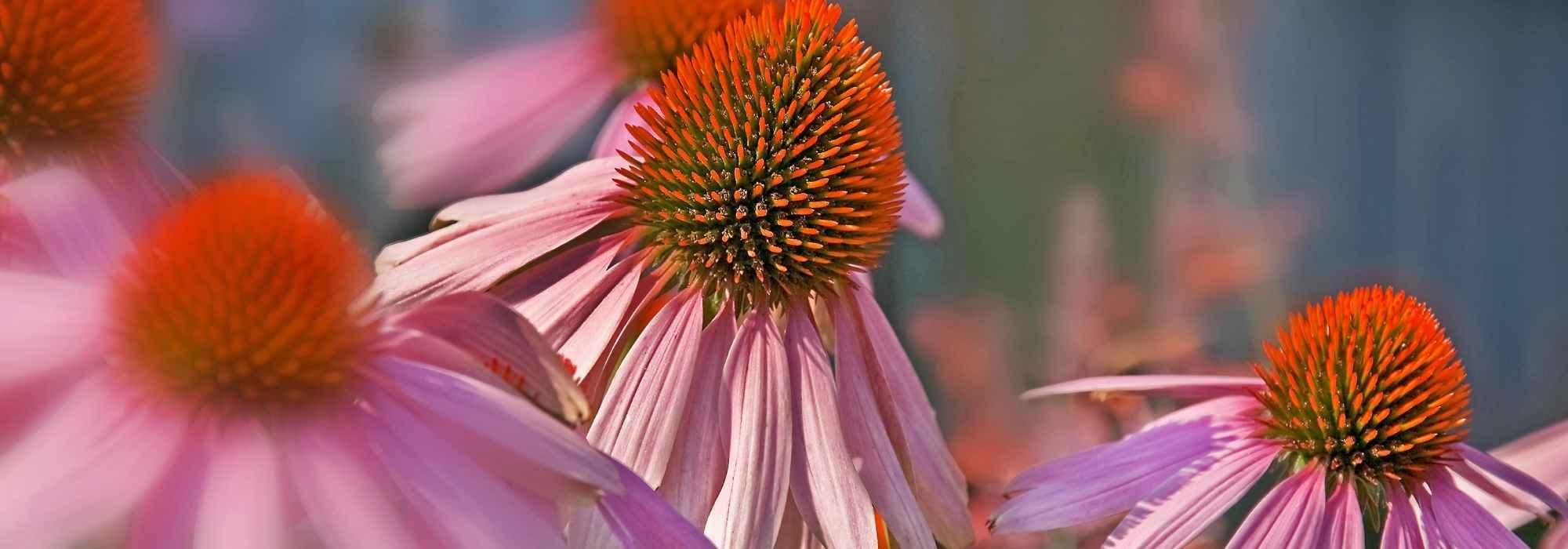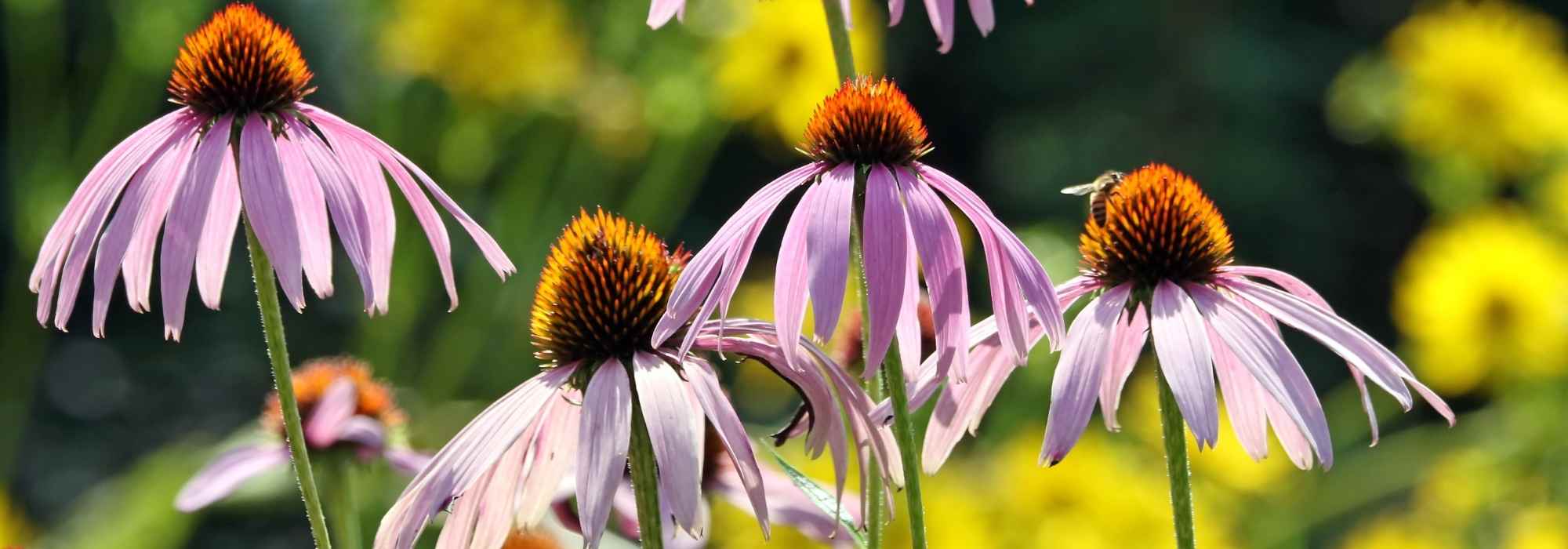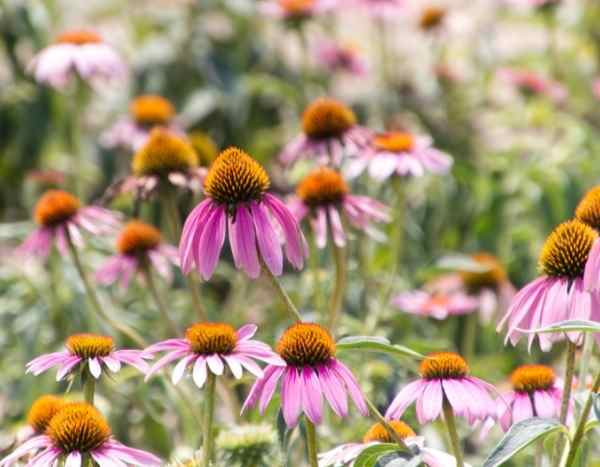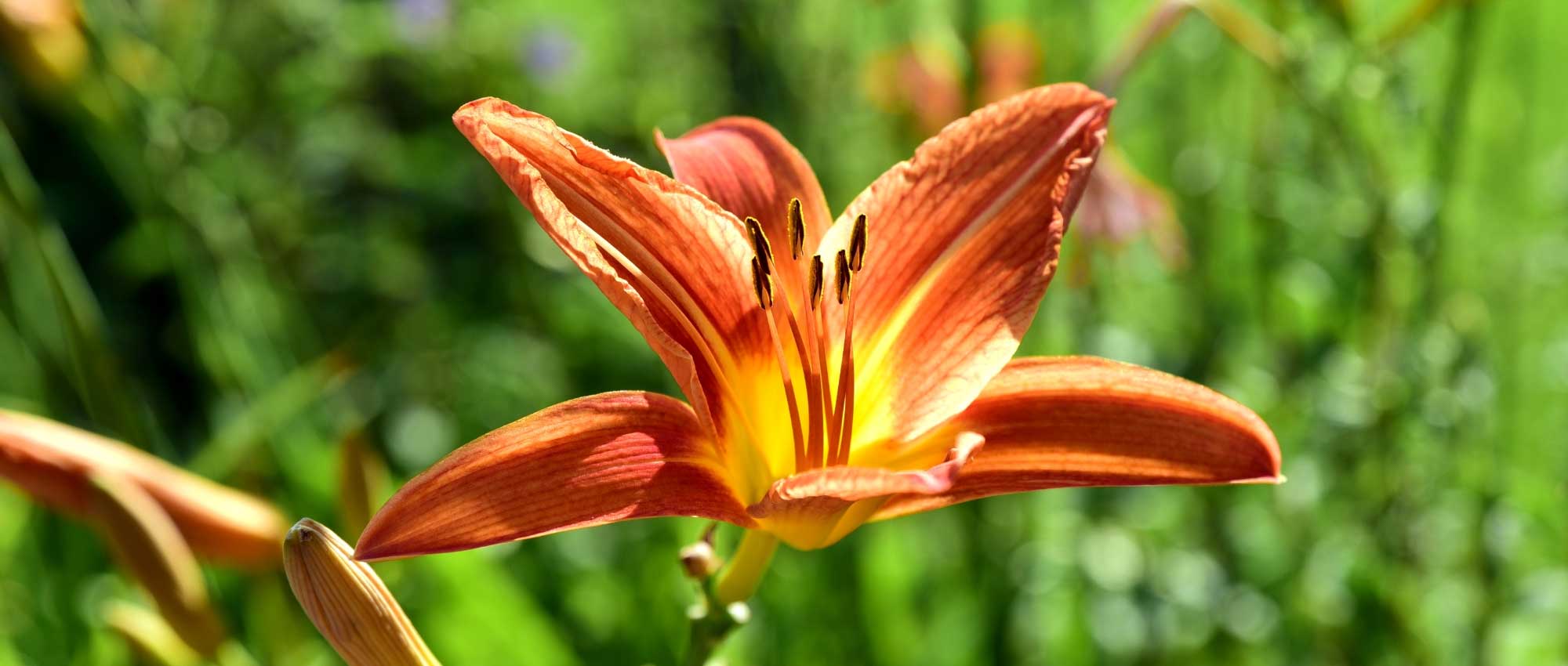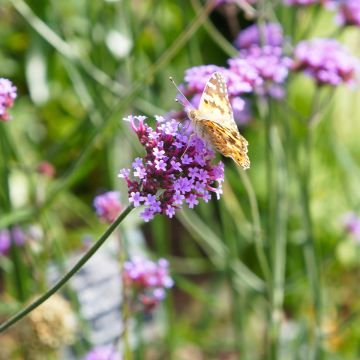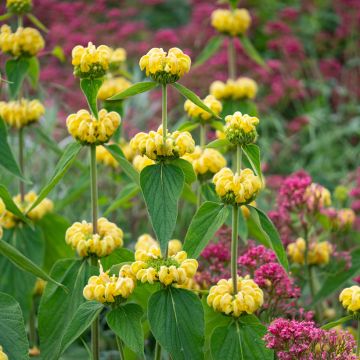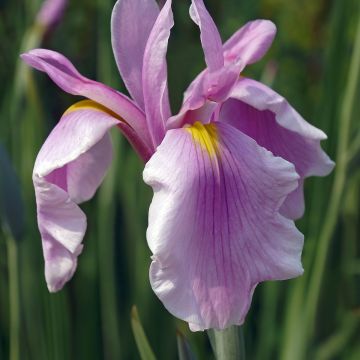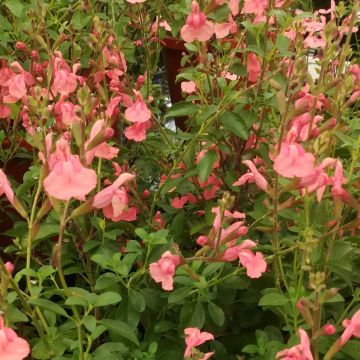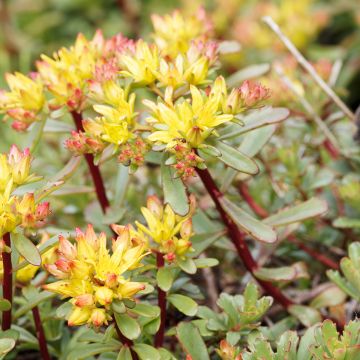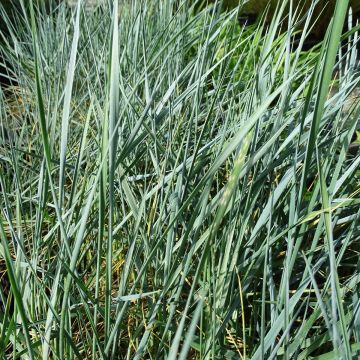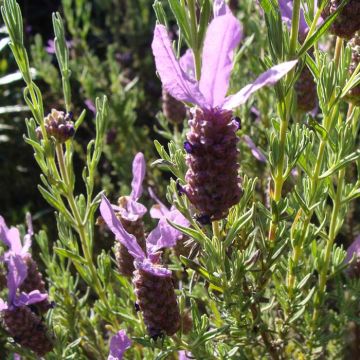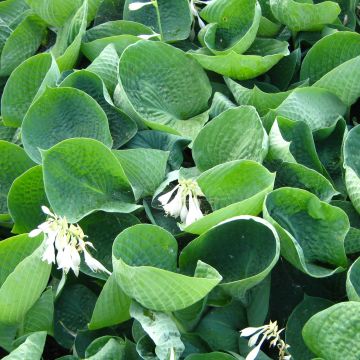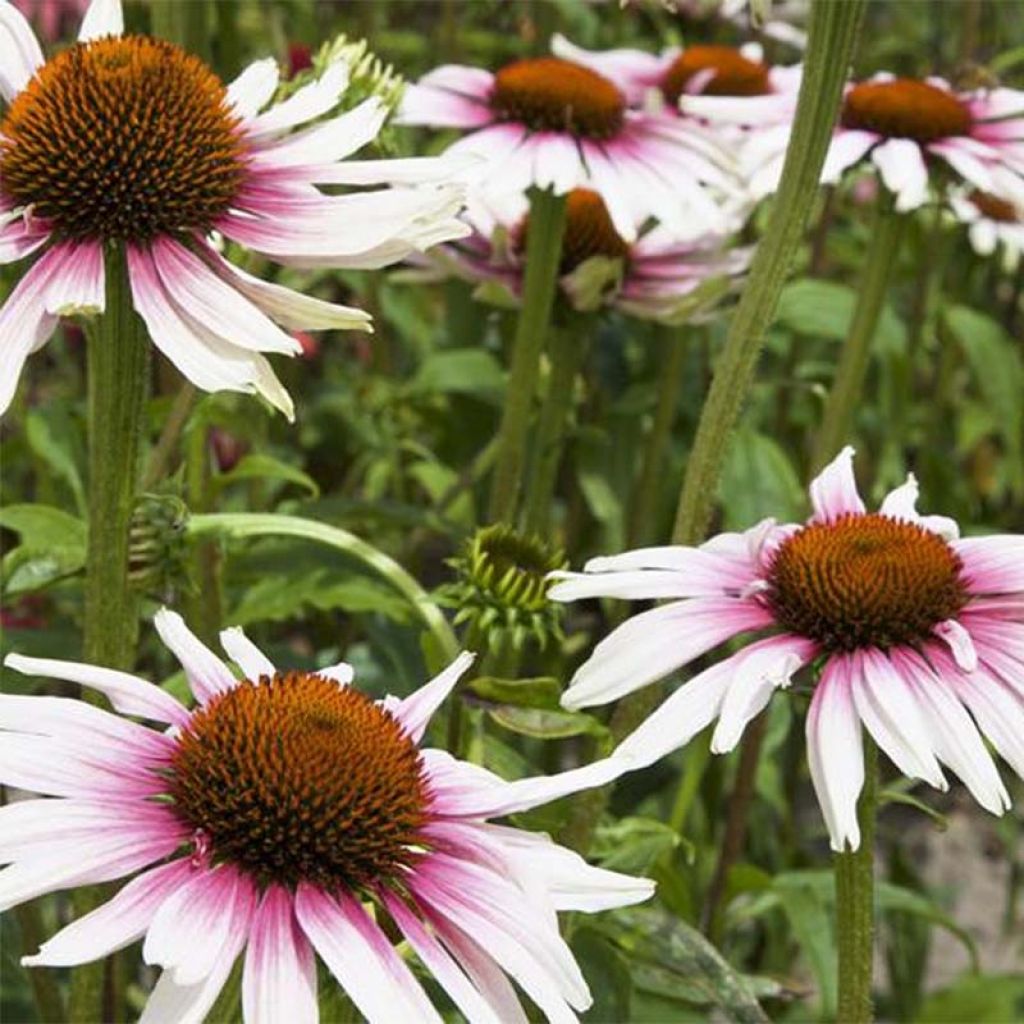

Echinacea purpurea Funky White - Purple Coneflower
Echinacea purpurea Funky White - Purple Coneflower
Echinacea purpurea Funky White
Purple Coneflower, Eastern Purple Coneflower
Special offer!
Receive a €20 voucher for any order over €90 (excluding delivery costs, credit notes, and plastic-free options)!
1- Add your favorite plants to your cart.
2- Once you have reached €90, confirm your order (you can even choose the delivery date!).
3- As soon as your order is shipped, you will receive an email containing your voucher code, valid for 3 months (90 days).
Your voucher is unique and can only be used once, for any order with a minimum value of €20, excluding delivery costs.
Can be combined with other current offers, non-divisible and non-refundable.
Why not try an alternative variety in stock?
View all →This plant carries a 12 months recovery warranty
More information
We guarantee the quality of our plants for a full growing cycle, and will replace at our expense any plant that fails to recover under normal climatic and planting conditions.
Does this plant fit my garden?
Set up your Plantfit profile →
Description
Echinacea purpurea 'Funky White' is a new variety of purple coneflower whose unusual flowering is reminiscent of certain African daisies. It offers bicoloured flowers with an unusual design, with white petals with a pink-violet base surrounding a cone adorned with a few rare thread-like and erect petals. Vigorous, resistant, and flowering from summer to autumn, it is a generous plant that is useful to birds and pollinators: it has its rightful place in a garden that embraces nature.
Native to the western United States, from Georgia to Michigan, passing through Oklahoma and Ohio, the purple coneflower is a perennial with a strong character, unlike anything known, but which boldly colonizes rocky meadows, savannas, open woodlands, and road edges in its natural habitat. It is a perennial plant with a root system, deciduous, whose vegetation dries up in winter.
'Funky White', recently obtained in the Netherlands, brings something new to this intrepid pioneer: the distribution of colours on the flower and the random presence of a few small erect petals around the central cone. The plant, endowed with beautiful vigour, has a bushy tufted habit, reaching 70cm (28in) in height and 40-45cm (16-18in) in width. On its erect, rigid, rough stems are arranged opposite, lanceolate, green leaves covered in rough hairs. The flowering period extends from July to September-October, accompanying all the summer flowers; it is highly visited by butterflies. The unbranched flower stalks are terminated by a solitary head inflorescence measuring 6-7cm (2-3in) in diameter, with a large and prominent central disk, initially olive green then brown-red. This central cone is surrounded by a few short and thin, erect, white-pink petals, followed by a row of slightly drooping ligules that are much more developed, white with a pink-violet base. The fruit is an achene that releases seeds which birds are fond of. This plant firmly and deeply anchors itself in the soil, thanks to its highly developed root system.
The 'Funky White' Echinacea, with its slightly exotic long flowering period, brings a lot of liveliness and originality to sunny borders. It is truly easy to grow in ordinary soil, and also thrives in flower beds and containers. It can be mixed with other Echinaceas ('Eccentric', 'Green Jewel') as well as yarrows, smaller-sized daisies ('Engelina', 'Princesse d'argent'), Echinops, summer asters in pastel colours. Lighten up the scene by mixing in some ornamental grasses like Stipa tenuifolia, Muhlenbergia capillaris, Pennisetum orientale 'Karley Rose'... Splendid in borders, the beautiful flowers of the 'Funky White' purple coneflower are also gorgeous in fresh or dried flower arrangements.
Properties: In homeopathy, its root is used to fight against colds and to strengthen the immune system. These properties were already used by Native Americans. The name Echinacea comes from the Greek echinos, which means "hedgehog-like," and acea, meaning "having the shape of," alluding to the flower heads. Purpurea means "purple."
Echinacea purpurea Funky White - Purple Coneflower in pictures
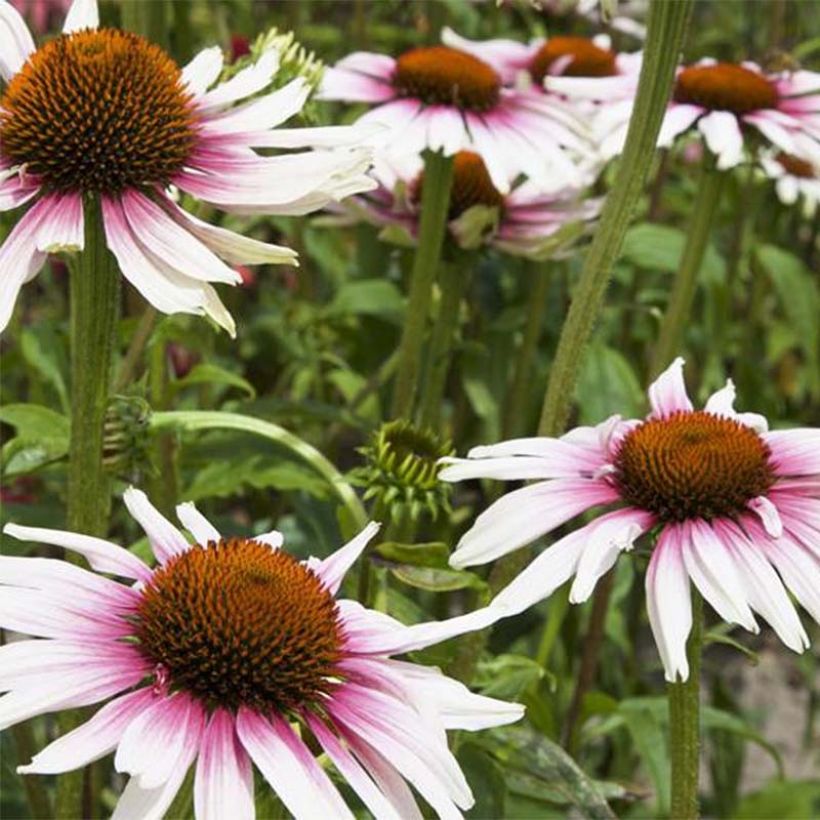

Flowering
Foliage
Plant habit
Botanical data
Echinacea
purpurea
Funky White
Asteraceae
Purple Coneflower, Eastern Purple Coneflower
Cultivar or hybrid
Other Echinacea - Coneflower
View all →Planting and care
Planting period
Intended location
Care
Planting & care advice
-
, onOrder confirmed
Reply from on Promesse de fleurs
Similar products
Haven't found what you were looking for?
Hardiness is the lowest winter temperature a plant can endure without suffering serious damage or even dying. However, hardiness is affected by location (a sheltered area, such as a patio), protection (winter cover) and soil type (hardiness is improved by well-drained soil).

Photo Sharing Terms & Conditions
In order to encourage gardeners to interact and share their experiences, Promesse de fleurs offers various media enabling content to be uploaded onto its Site - in particular via the ‘Photo sharing’ module.
The User agrees to refrain from:
- Posting any content that is illegal, prejudicial, insulting, racist, inciteful to hatred, revisionist, contrary to public decency, that infringes on privacy or on the privacy rights of third parties, in particular the publicity rights of persons and goods, intellectual property rights, or the right to privacy.
- Submitting content on behalf of a third party;
- Impersonate the identity of a third party and/or publish any personal information about a third party;
In general, the User undertakes to refrain from any unethical behaviour.
All Content (in particular text, comments, files, images, photos, videos, creative works, etc.), which may be subject to property or intellectual property rights, image or other private rights, shall remain the property of the User, subject to the limited rights granted by the terms of the licence granted by Promesse de fleurs as stated below. Users are at liberty to publish or not to publish such Content on the Site, notably via the ‘Photo Sharing’ facility, and accept that this Content shall be made public and freely accessible, notably on the Internet.
Users further acknowledge, undertake to have ,and guarantee that they hold all necessary rights and permissions to publish such material on the Site, in particular with regard to the legislation in force pertaining to any privacy, property, intellectual property, image, or contractual rights, or rights of any other nature. By publishing such Content on the Site, Users acknowledge accepting full liability as publishers of the Content within the meaning of the law, and grant Promesse de fleurs, free of charge, an inclusive, worldwide licence for the said Content for the entire duration of its publication, including all reproduction, representation, up/downloading, displaying, performing, transmission, and storage rights.
Users also grant permission for their name to be linked to the Content and accept that this link may not always be made available.
By engaging in posting material, Users consent to their Content becoming automatically accessible on the Internet, in particular on other sites and/or blogs and/or web pages of the Promesse de fleurs site, including in particular social pages and the Promesse de fleurs catalogue.
Users may secure the removal of entrusted content free of charge by issuing a simple request via our contact form.
The flowering period indicated on our website applies to countries and regions located in USDA zone 8 (France, the United Kingdom, Ireland, the Netherlands, etc.)
It will vary according to where you live:
- In zones 9 to 10 (Italy, Spain, Greece, etc.), flowering will occur about 2 to 4 weeks earlier.
- In zones 6 to 7 (Germany, Poland, Slovenia, and lower mountainous regions), flowering will be delayed by 2 to 3 weeks.
- In zone 5 (Central Europe, Scandinavia), blooming will be delayed by 3 to 5 weeks.
In temperate climates, pruning of spring-flowering shrubs (forsythia, spireas, etc.) should be done just after flowering.
Pruning of summer-flowering shrubs (Indian Lilac, Perovskia, etc.) can be done in winter or spring.
In cold regions as well as with frost-sensitive plants, avoid pruning too early when severe frosts may still occur.
The planting period indicated on our website applies to countries and regions located in USDA zone 8 (France, United Kingdom, Ireland, Netherlands).
It will vary according to where you live:
- In Mediterranean zones (Marseille, Madrid, Milan, etc.), autumn and winter are the best planting periods.
- In continental zones (Strasbourg, Munich, Vienna, etc.), delay planting by 2 to 3 weeks in spring and bring it forward by 2 to 4 weeks in autumn.
- In mountainous regions (the Alps, Pyrenees, Carpathians, etc.), it is best to plant in late spring (May-June) or late summer (August-September).
The harvesting period indicated on our website applies to countries and regions in USDA zone 8 (France, England, Ireland, the Netherlands).
In colder areas (Scandinavia, Poland, Austria...) fruit and vegetable harvests are likely to be delayed by 3-4 weeks.
In warmer areas (Italy, Spain, Greece, etc.), harvesting will probably take place earlier, depending on weather conditions.
The sowing periods indicated on our website apply to countries and regions within USDA Zone 8 (France, UK, Ireland, Netherlands).
In colder areas (Scandinavia, Poland, Austria...), delay any outdoor sowing by 3-4 weeks, or sow under glass.
In warmer climes (Italy, Spain, Greece, etc.), bring outdoor sowing forward by a few weeks.






























